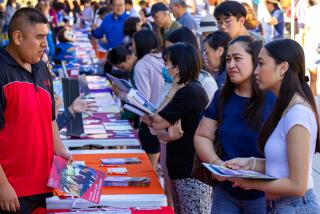‘Is it worth it?’ How distance learning brings new challenges to college applications
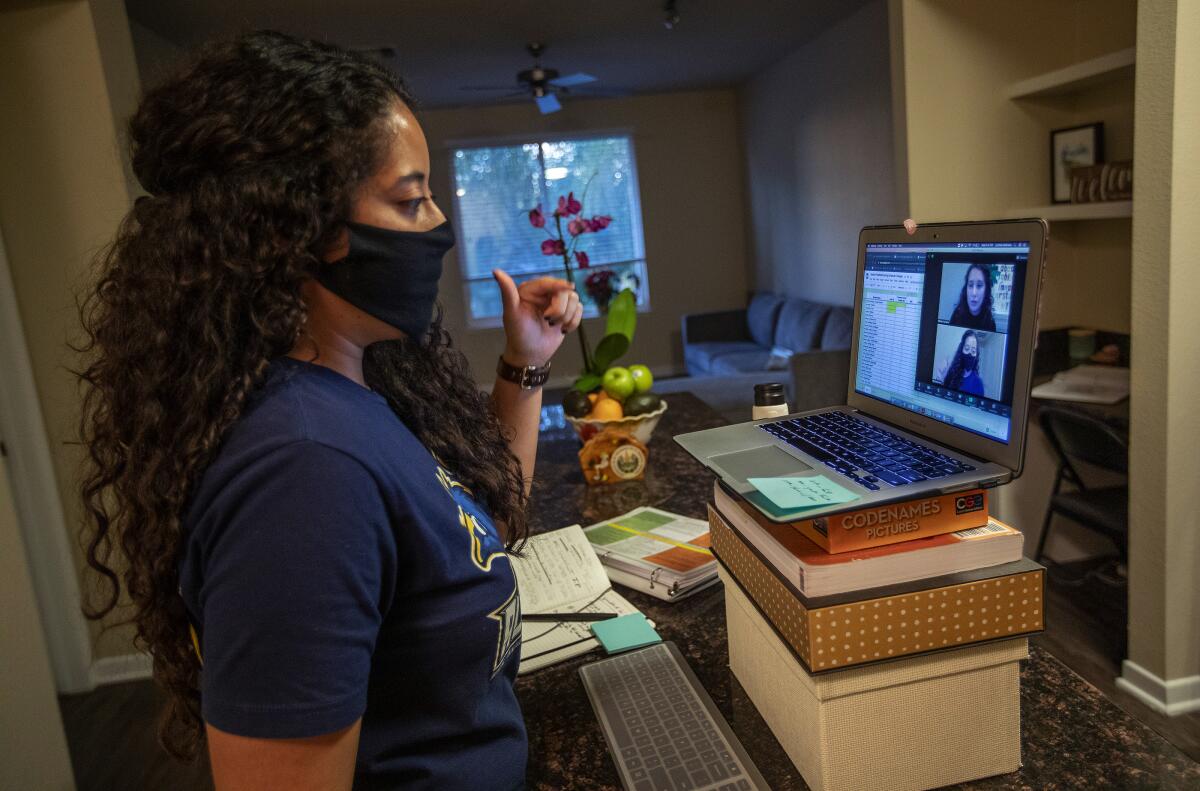
With the California State University application deadline a day away, John Marshall High School college counselor Tricia Bryan had one final push to make Monday. At least 40 of her students had begun an application to the CSU but had not completed it. She didn’t know why because she had not seen or heard from most of them.
“This whole thing is unpredictable — who’s applying, why they’re applying, who’s not applying, why they’re not applying,” Bryan said. “The one thing that’s for certain is, I’m dependent on whether or not they respond back to me.... I just have less access.”
This is the challenge hundreds of counselors and students are facing as they enter the final weeks of the college application process amid a remote learning environment, major changes to admissions policies and uncertainty about what higher education next fall will look like.
Even with counselors’ efforts to aggressively meet online with students and follow up by text, phone and email to check that their applications are on track, for many seniors, especially the underserved, virtual counseling has been no match for the drop-in, hub-of-activity role that high school college counseling offices provide.
Throughout Los Angeles, counselors have had a hard time reaching many of their students. The lack of reliable technology continues to be an issue. Most troubling, counselors said, some students are unmotivated amid their families’ pandemic hardships.
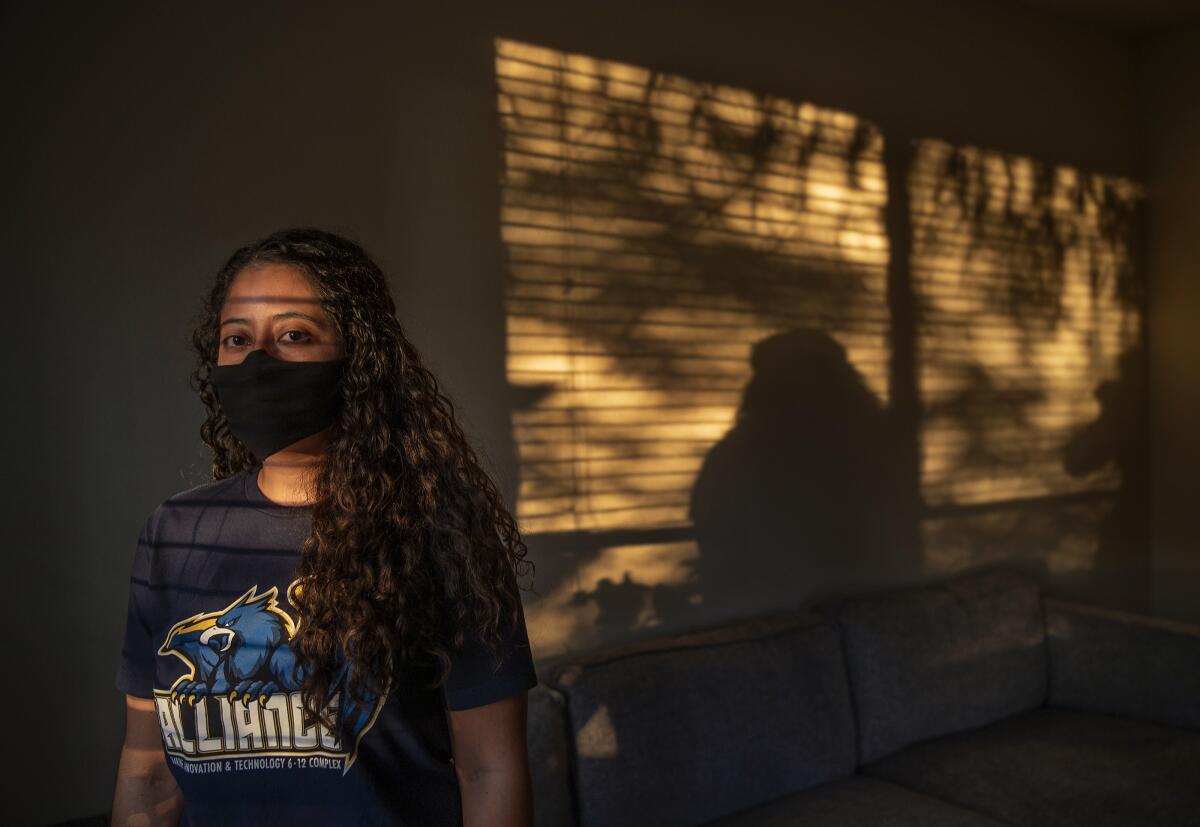
“The difference between last year and this year has been mostly [students asking], ‘Will this even happen? Is it worth it or should I focus on different things?’ ” said Cynthia Medrano, college counselor at Alliance Marine — Innovation and Technology 6-12 Complex, a charter school in the Los Angeles Unified School District.
In ordinary times, counselors can pull students out of class, stop them in the hallway or summon them to their offices.
“I have less control now,” said Bryan, a college counselor for nearly 600 seniors. She estimated she hadn’t heard from half about their college application plans this year.
“In the past, I have interacted with those students in some way at some point in person,” Bryan said. “At this point, it’s just show up to a Zoom session. I’m not able to intervene as forcefully.”
The overall effect on college applications remains to be seen, but early national indicators point to a slowdown this year. National data released last week showed that college enrollment among the high school class of 2020 plunged 22% from the previous year, with even steeper drops among students at high-poverty, high-minority schools.
In California, applications for financial aid are down by about 16% among high schoolers who will graduate in 2021, with the drops most pronounced among schools serving low-income students, schools with high Latino and Black enrollments and rural high schools, according to the California Student Aid Commission.
“Some of these forms are very complicated, and it is really helpful to have an adult sitting next to you at a computer going through it,” said Lauren Cook, immediate past-president of the Western Assn. for College Admission Counseling. “The loss of that proximity and of the ability to chase someone down a hall ... to have them come and work on things is really problematic.”
For first-generation students in particular, Cook said, the knowledgeable adult role is crucial. Plus, she said, “to have the loss of the school computer, the reliable Wi-Fi, perhaps even a quiet space to work ... can be difficult.”
Application data from the University of California and the Cal State system are pending, but the California State University — which largely serves low-income, underrepresented and first generation college students — recently extended its application deadline to Dec. 15 to make it easier for more students to apply and announced a plan to reopen with in-person instruction next year. The University of California deadline was Dec. 4.
Counselors, students and admissions experts have speculated the pandemic could affect college admissions in a variety of ways: More students could potentially opt to stay closer to home, there may be greater competition because of students who took a gap year or students may opt out because of financial and family issues.
Also adding to uncertainty this year is the lack of SAT and ACT test requirements in the admissions process.
In this environment, counselors have gotten creative, offering not only group presentations and workshops as usual, but also increasing their outreach by phone, one-on-one appointments and social media. Some began earlier in the year, anticipating it would take longer to reach every student.
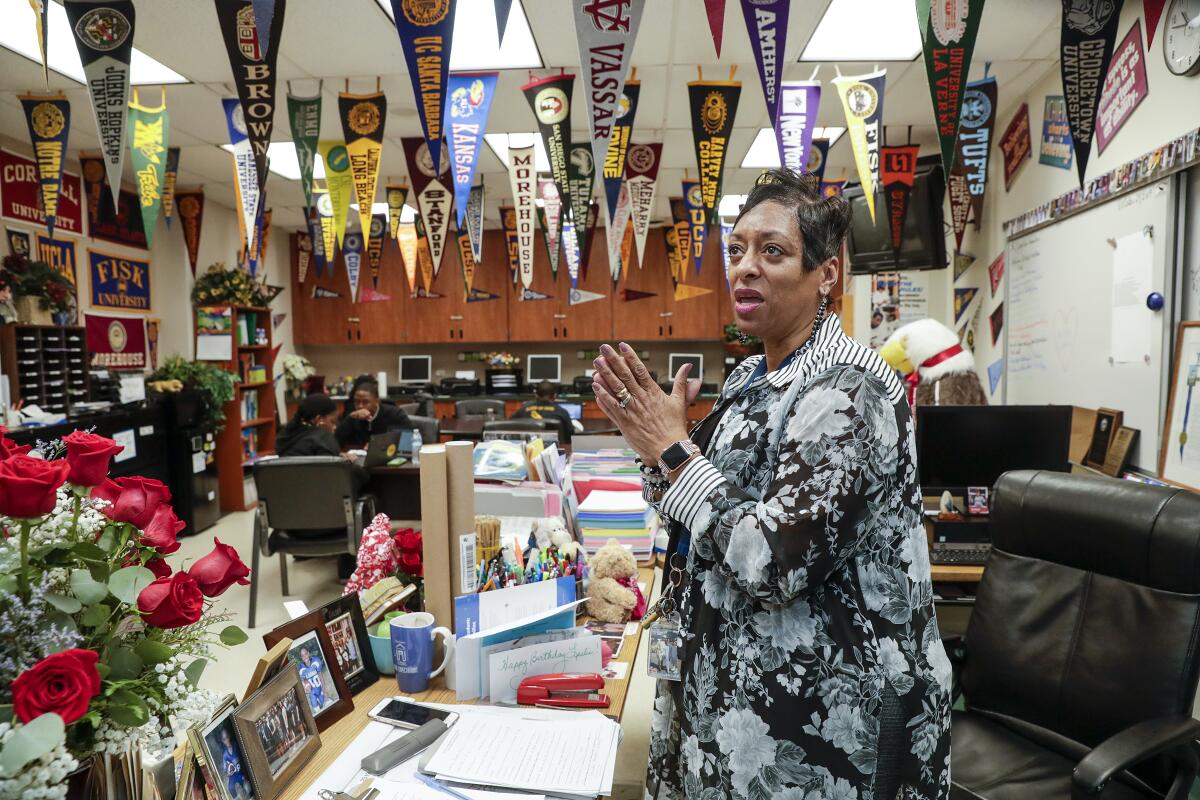
Lisa Golden, a college advisor at the King/Drew Magnet High School of Medicine and Science in South Los Angeles, revamped her website with reference guides and created an email account so students could get quick answers from the 23 “peer counselors” she trained. She took to posting on Instagram. And she hosted 30 after-school college information and financial aid sessions, including two-hour meetings specifically for undocumented students.
“Am I tired? Am I sick of looking at that little square on the screen? Yes, I am,” Golden said. “But I am determined to get my students what they need.”
Despite their efforts, counselors expressed worry that fewer students would apply and go on to four-year universities this year. Medrano said that last year 100% of her eligible students applied to the Cal State system or UC, but this year only 77% did.
Danny Moreno was one she worried about. Before the pandemic, Moreno, who played soccer and ran cross-country, loved school, earning mostly A’s and Bs, and planned to apply to UC Santa Barbara, UC San Diego, Cal State Northridge and Cal Poly San Luis Obispo to study engineering.
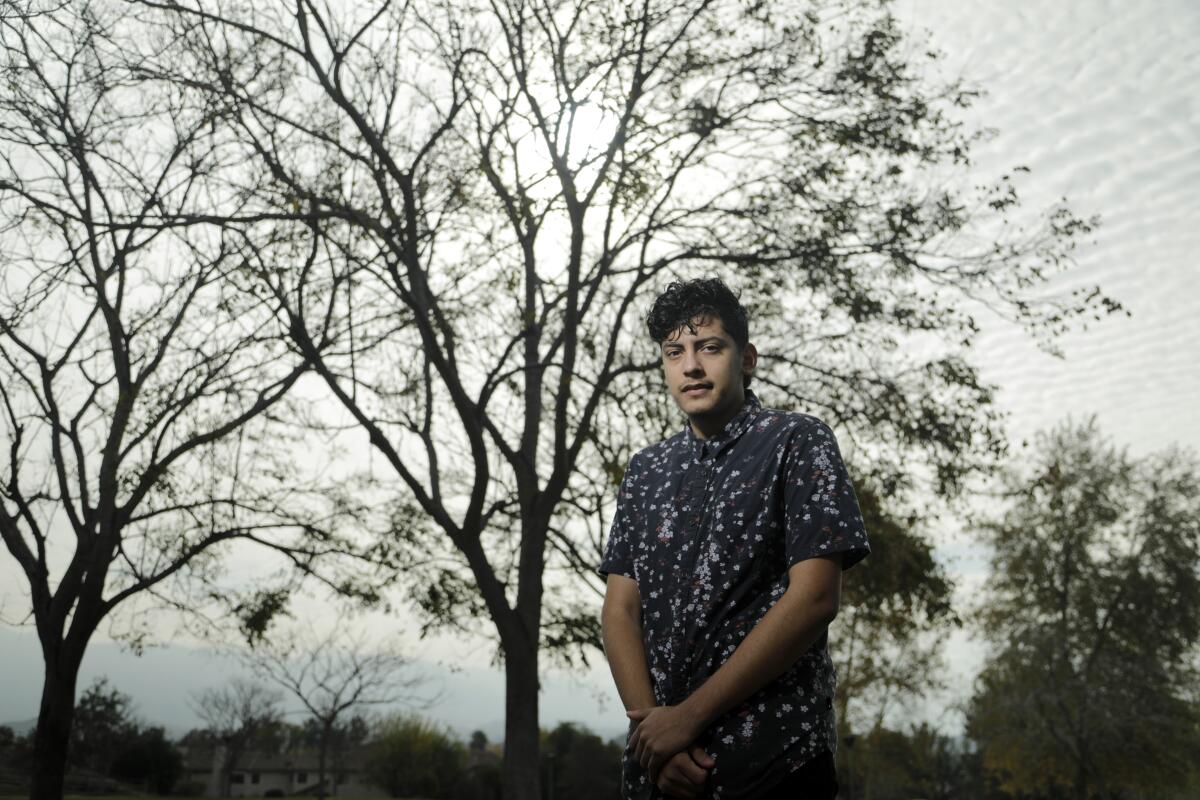
But he struggled with virtual learning, especially in classes such as AP calculus and AP computer science. His computer would lag, and he had a hard time getting his questions answered. Moreno’s dad runs a barbershop, and business suffered during the pandemic. His mom, previously a homemaker, started work at Costco. That left him mostly responsible for supervising and cooking for his four younger siblings, ages 1 to 15.
“Right now my grades are pretty poor,” he said — two A’s, two Bs, and two Cs. “It’s harder for me to do work.”
Moreno started the college application process but changed his mind halfway through. “The corona isn’t going to end anytime soon,” he said. His friends who are in college now haven’t had a great experience online. “I’m thinking to myself if it’s that hard for them, and they were straight-A students, it’s going to be two times harder for me.”
He ended up not applying to any UCs or Cal State universities. A private university in Arizona specializing in aerospace reached out to him, promising hybrid instruction, so he applied. Otherwise he plans to go to community college and transfer.
Other students completed their applications mostly as planned.
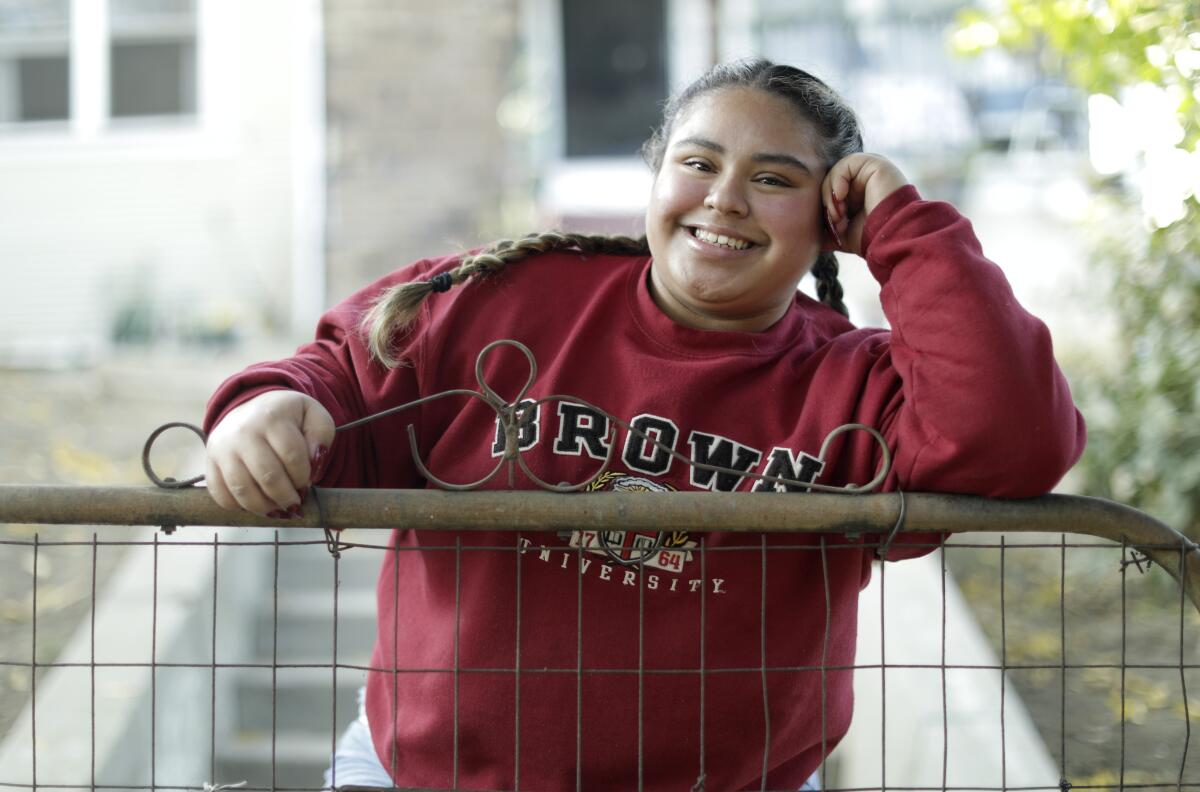
Rosa Murillo, a senior at John Marshall High and first-generation college-goer, has long had dreams of going to Brown University and becoming a doctor. The pandemic didn’t change that, but it did spur her to apply more broadly.
The A student applied to 30 colleges, about half of them UCs and Cal State universities and the remaining private schools. She plans to apply for financial aid and scholarships but is also leaving open the possibility of going to community college and transferring to save money and be closer to her mother.
“Part of me wants to say in California because of the pandemic and because I don’t know if I’m going to have money to pay for an out-of-state school,” Murillo said. “But if I do get a good financial aid package … I’m willing to take that route for the sake of financial income and for the experience.”
Isabel Santos Ayala, a senior and first-generation college student at Alliance Marine, relied heavily on Medrano for help with applications. “I was clueless,” she said. “Without [my school] explaining things to me and being there as a support system I would have probably got lost in the process.”
Looming over Santos Ayala was the SAT. “I was very anxious about the fact that my acceptance to college will depend on how well I can take the test,” she said.
With standardized tests out of the equation this year, Santos Ayala breathed a sigh of relief. “Not having to take those tests really gave me a chance to broaden my scope and look at schools that I wouldn’t have applied to because of fear of failure,” she said.
Those included “dream schools” Humboldt State and Cal State East Bay. Santos Ayala recently got into both.
Times staff writer Julia Barajas contributed to this report.
More to Read
Sign up for Essential California
The most important California stories and recommendations in your inbox every morning.
You may occasionally receive promotional content from the Los Angeles Times.


